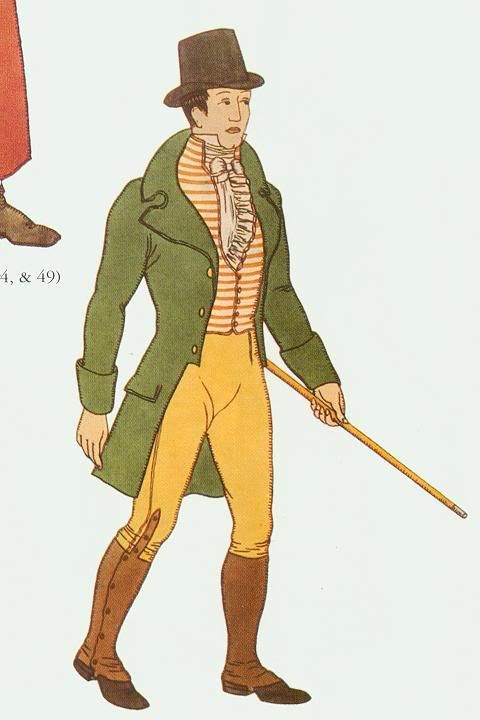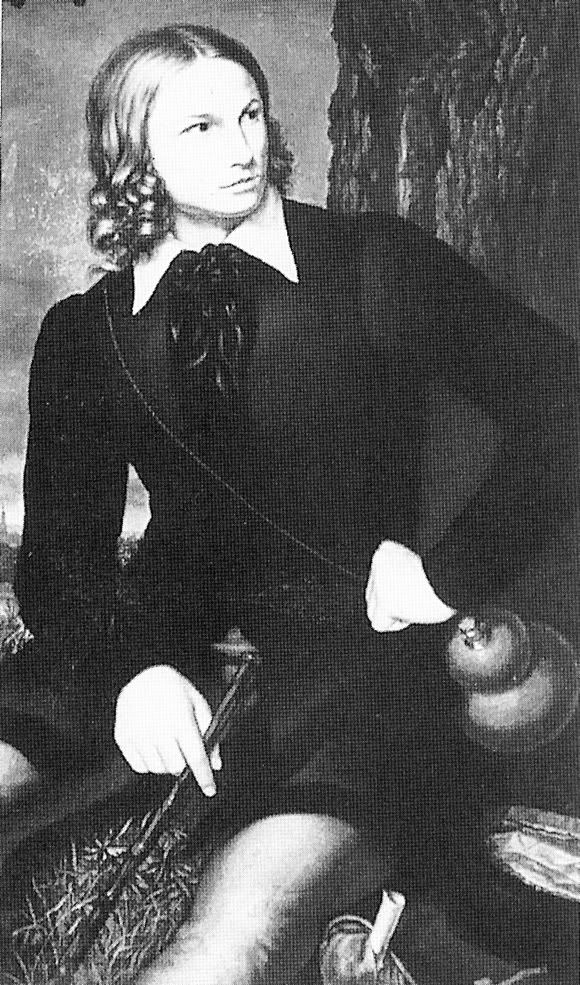Comments on authenticity circa 1820s?
Since no one else has answered, I'll take a crack at it.
I'm afraid your guide is much better dressed for the
1920's than the 1820's. The hat, shirt, tie, trousers and shoes are all obviously modern. The broad, padded shoulders of the coat are very 20th century. And the shiny lapels, easy waist, and sleeve shape all mark it as no earlier than last quarter 19th century.
Here are a couple of plates from Norris and Curtis's "Nineteenth Century Costume and Fashion" illustrating typical men's costume of 1810 and 1820:
1810:

1820:

Some things to note:
- Trousers were just coming into fashion, and if worn should be cut to fit the shape of the lower leg. Often they were strapped down as in the lower figure.
- Waistcoats came no lower than the natural waist. Often they were cut low to show the fancy shirt front. Wearing more than one waistcoat (not shown) was fashionable at this time.
- Footwear is obviously not shiny Corfam pumps.
- Coats were cut very differently than modern ones. The tailcoat was still daywear in this period, with the first frocks (riding coats or
redingotes) dating from 1810 according to the authors. Coats were cut to fit tight at the waist (although waist seams were not yet in common use), and often narrow in the back with poofy
en gigot shoulders. Beyond the shoulders they were tight on the arm and generally cuffed. Collars and lapels were wide, and came high on the neck. Coats were also generally colored at this time, with a favorite being sky-blue or
bleu celeste.
Your guide is well dressed, but not very authentically dressed.
Hope this is of interest,
Jim Ruley














